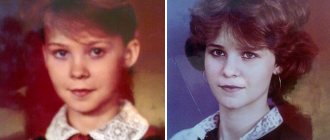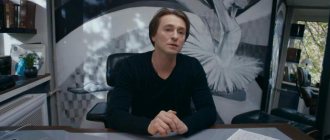Childhood and youth
The baby's mother, Felipe Domenech, immediately began to care for and pamper her son, while the father remained strict with his offspring. The boy grew up as a capricious and very wayward child. Having learned the truth about his older brother at the age of 5, he began to be burdened by this fact, which further influenced his fragile psyche.
Salvador Dali
In 1908, the Dali family welcomed a daughter, Ana Maria Dali, who later became a close friend of her brother. The boy became interested in drawing from early childhood, and he was good at it. A workshop was built for Salvador in the utility room, where he spent hours alone to create.
Personal life
The year 1929 brought changes to the personal life of Salvador Dali and his relatives. He met the only love of his life - Elena Ivanovna Dyakonova, an emigrant from Russia, who at that time was the wife of the poet Paul Eluard. She called herself Gala Eluard and was 10 years older than the artist.
After their first meeting, Dali and Gala never parted again, and his father and sister were horrified by this union. Salvador Sr. deprived his son of all financial subsidies from his side, and Ana Maria broke off creative relations with him. The newly-made lovers settle on the sandy shore in Cadaques in a small shack without amenities, where Salvador begins to create his immortal creations.
Three years later they officially signed, and in 1958 their wedding took place. The couple lived happily for a long time, until discord began in their relationship in the early 60s. The elderly Gala longed for carnal pleasures with young boys, and Dali began to find solace in the circle of young favorites. For his wife, he buys a castle in Pubol, where he can only visit with Gala’s consent.
For about 8 years, his muse was the British model Amanda Lear, with whom Salvador had only a platonic relationship; it was enough for him to watch his passion for hours and enjoy her beauty. Amanda's career destroyed their relationship, and Dali broke up with her without regret.
Birth and family
In the northeastern part of Spain, not far from Barcelona, there is a small town called Figueres. At the very beginning of the twentieth century, on May 11, 1904, the future genius Salvador Dali was born in this place. His family at that time consisted only of his parents - his father, Don Salvador Dali y Cusi, and his mother, Dona Filipa Domenech. Later, Salvador had a little sister, Anna Maria.
Before this, there was already one son in the family, but he died of meningitis in 1903, just shy of two years old. When the future artist was only 5 years old, while visiting his brother’s grave, his parents had the imprudence to say that Salvador was his reincarnation. From that moment on, Dali had an obsessive idea that his parents loved not him at all, but his older deceased brother in the person of Salvador. Ideas of this kind will be characteristic of a genius throughout his life.
But the parents actually loved both Salvador and his younger sister very much. The family was of average income, father was a wealthy state notary, mother was engaged in housekeeping and raising children. The father was an atheist, but the mother, on the contrary, was an unwavering Catholic, thanks to her insistence the children regularly attended church.
Creation
Despite the fact that he behaved provocatively at school and did not study well, his father sent him to painting lessons from local artist Ramon Pichot. In 1918, the first exhibition of the young man’s works took place in his native Figueres. It featured landscapes inspired by Dali's picturesque surroundings. Until his last years, Salvador will remain a great patriot of Catalonia.
Dali's painting "Twilight Old Man"
Already in the first works of the young artist it is clear that he is mastering the painting techniques of the Impressionists, Cubists and Pointillists with special diligence. Under the guidance of art professor Nunens, Dali created the paintings “Aunt Anna Sewing in Cadaqués,” “The Twilight Old Man,” and others. At this time, the young artist became interested in the European avant-garde; he read the works of Freud and Nietzsche. Salvador writes and illustrates short stories for a local magazine. In Figueres he gains some fame.
Salvador Dali in his youth
When the young man turns 17, his family experiences a great loss: his mother dies of breast cancer at the age of 47. Dali’s father will not stop mourning for his wife until the end of his life, and the character of Salvador himself will become completely unbearable. As soon as he entered the Madrid Academy of Arts that same year, he immediately began to behave defiantly towards teachers and students. The antics of the arrogant dandy caused outrage among the Academy professors, and Dali was expelled from the educational institution twice. However, staying in the capital of Spain allowed the young Dali to make the necessary contacts.
Dali's painting "Basket of Bread"
Federico Garcia Lorca, Pablo Picasso and Luis Buñuel became his friends; they significantly influenced the artistic growth of El Salvador. But it was not only creativity that connected the young people. It is known that García Lorca was not shy about his unconventional orientation, and contemporaries even claimed his connections with Dali. But Salvador never became homosexual, even despite his strange sexual behavior.
"Self-Portrait" by Dali
Scandalous behavior and lack of academic art education did not prevent Salvador Dali from gaining worldwide fame just a few years later. His works of this period were: “Port Alger”, “Young woman seen from the back”, “Female figure at the window”, “Self-portrait”, “Portrait of a father”. And the work “Basket of Bread” even ends up at an international exhibition in the USA. The main model who constantly posed for the artist to create female images at this time was his sister Ana Maria.
Best pictures
The artist’s first famous work is considered to be the canvas “The Persistence of Memory,” which depicts liquid hours flowing from a table against the backdrop of a sandy beach. Now the painting is in the USA at the Museum of Modern Art and is considered the master’s most famous work. With the assistance of his beloved Gala, Dali exhibitions begin to take place in various cities in Spain, as well as in London and New York.
Dali's painting "The Persistence of Memory"
The genius is noticed by the philanthropist Viscount Charles de Noeil, who buys his paintings at a high price. With this money, the lovers buy themselves a decent house near the town of Port Lligata, which is located on the seashore.
In the same year, Salvador Dali takes another decisive step towards future success: he joins the surrealist society. But here, too, the eccentric Catalan does not fit into the mold. Even among the rebels and disturbers of traditional art, such as Breton, Arp, de Chirico, Ernst, Miro, Dali looks like a black sheep. He comes into conflict with all participants in the movement and ultimately proclaims his credo - “Surrealism is me!”
Dali's painting "A dream caused by the flight of a bee around a pomegranate, a second before awakening"
After Hitler came to power in Germany, Dali began to have explicit sexual fantasies about the politician, which found expression in his artistic work, and this also outraged his colleagues. As a result, on the eve of World War II, Salvador Dali breaks off his relationship with a group of French artists and leaves for America.
Painting "The Mystery of William Tell"
During this time, he managed to take part in the creation of Luis Bonuel’s surreal film “Un Chien Andalou,” which was a great success with the public, and also had a hand in his friend’s second film, “The Golden Age.” The young author’s most famous work of this period was “The Riddle of William Tell,” in which he depicted the Soviet leader of the Communist Party with a large exposed gluteal muscle.
Among several dozen paintings from this time, which were exhibited at personal exhibitions in the UK, USA, Spain and Paris, one can highlight “Soft Construction with Boiled Beans, or Premonition of Civil War.” The picture appeared just before the outbreak of the Spanish Civil War, along with “Exciting Jacket” and “Lobster Telephone”.
After visiting Italy in 1936, Dali began to literally rave about the art of the Italian Renaissance. Features of academicism appeared in his work, which became another contradiction with the surrealists. He writes “Metamorphoses of Narcissus”, “Portrait of Freud”, “Gala - Salvador Dali”, “Autumn Cannibalism”, “Spain”.
Dali's painting "The Dream of Venus"
His last work in the style of surrealism is considered to be his “Dream of Venus”, which appeared in New York. In the USA, the artist not only paints, he creates advertising posters, designs stores, works with Disney and Hitchcock, helping them with the art design of films. At the same time, he wrote his famous autobiography, “The Secret Life of Salvador Dali, Written by Himself,” which instantly sold out.
Salvador Dali
Biography in film format “Biography of Salvador Dali”
On May 11, 1904, in the family of Don Salvador Dali y Cusi and Dona Felipa Domenech in the small Spanish town of Figueras in northeastern Spain, not far from Barcelona (see map of Spain), a boy was born who was destined to become one in the future one of the greatest geniuses of the era of surrealism. His name was Salvador Dali.
Dali was undoubtedly a smart young man, although he liked to claim the opposite. He had a natural talent for drawing, which was reflected in the doodles in the margins of his textbooks and the cartoons he drew to amuse his sister. His talent was developed by Ramon Pijo, a local impressionist pointillist artist and friend of the Dalí family.
Most of Dali's youth was spent in a family house near the sea in Cadaques. Here
The imaginative boy interacted with local fishermen and workers, absorbing the mythology of the lower classes and learning the superstitions of his people. Perhaps this influenced his talent and became a prerequisite for weaving mystical themes into his art. As Anna-Maria claimed, their house was the same as everyone else. Life seemed happy, although the death of her mother from cancer in 1921 was a huge emotional shock and a heavy blow for the family.
When Dali turned seventeen, he had already begun to gain recognition in the artistic circles of Figueres. He left home, persuading his father to help establish his own art studio in Madrid at the Academy of Fine Arts of San Fernando, one of whose most famous directors was Francisco Goya. Salvador Dali went to Madrid in 1922. He was full of the self-confidence of a young man looking for adventure, but knowing that a quiet haven awaits him at home. However, this belief was subsequently greatly shaken.
In 1921, at the age of 17, he became a student at the Academy of Fine Arts in Madrid.
Around 1923, Dalí began his experiments with Cubism, often even locking himself in his room to paint. At that time, most of his colleagues tried their artistic abilities and strengths in impressionism, which Dali was interested in several years earlier. When Dali's comrades saw him working on cubist paintings, his authority immediately rose, and he became not just a participant, but one of the leaders of an influential group of young Spanish intellectuals, among whom were the future film director Luis Buñuel and the poet Federico García Lorca. Meeting them had a great influence on Dali's life. In 1925, Dali painted another painting in the style of Picasso: Venus and the Sailor. She was one of the seventeen paintings exhibited at Dali’s first personal exhibition.
The second exhibition of Dali's works, held in Barcelona at the Delmo Gallery at the end of 1926, was greeted with even greater enthusiasm than the first. Perhaps thanks to this, Dali's father somewhat came to terms with the shocking expulsion of his son from the Academy, after which any opportunity to make an official career disappeared. Dali returned with pleasure to his admiration for the Renaissance masters and forgot about Paris for a while. But in 1929, an invitation came from a friend of Buñuel, which the artist could not help but accept. He was invited to Paris to work on a surreal film using images taken from the human subconscious. The film was called " Un Chien Andalou ". Now this film is a classic of surrealism. It was a short film designed to shock and touch the heart of the bourgeoisie and ridicule the excesses of the avant-garde. Among the most shocking images is the famous scene, which is known to have been invented by Dali, where a man's eye is cut in half with a blade. The decaying donkeys that appeared in other scenes were also part of Dali's contribution to the film. After the first public screening of the film in October 1929 at the Théâtre des Ursulines in Paris, Buñuel and Dalí immediately became famous and celebrated. Two years after Un Chien Andalou came The Golden Age. Critics received the new film with delight. But then he became a bone of contention between Buñuel and Dali: each claimed that he did more for the film than the other. However, despite the disputes, their collaboration left a deep mark on the lives of both artists and sent Dali on the path of surrealism.
In 1930, Dali's paintings began to bring him fame. His work was influenced by the works of Freud. In his paintings he reflected human sexual experiences, as well as destruction and death. His masterpieces such as “Soft Hours” and “The Persistence of Memory” were created. Dali also creates numerous models from various objects.
In 1932, the second film based on Dali’s script, “The Golden Age,” premiered in London.
Gala divorces her husband in 1934 and marries Dali. This woman was Dali’s muse and deity throughout his life.
Between 1936 and 1937, Dali worked on one of his most famous paintings, “Metamorphoses of Narcissus,” and a book of the same name immediately appeared. In 1939, Dali had a serious quarrel with his father. The father was dissatisfied with his son’s relationship with Gala and forbade Dali to appear in the house.
After the occupation in 1940, Dalí moved from France to the USA to California. There he opens his workshop. There he wrote his most famous book, “The Secret Life of Salvador Dali.” After his marriage to Gala, Dali left the surrealist group because... His and the group's views begin to diverge. “I don’t care at all about the gossip that Andre Breton may spread about me, he simply doesn’t want to forgive me for the fact that I remain the last and only surrealist, but it is still necessary that one fine day the whole world will read these lines , found out how everything really happened.” (“The Diary of a Genius”).
In 1948, Dali returned to his homeland. Begins to get involved in religious and fantastic themes.
In 1953, a large-scale exhibition took place in Rome. He exhibits 24 paintings, 27 drawings, 102 watercolors.
In 1956, Dali began a period when the inspiration for his second work was the idea of the Angel. For him, God is an elusive concept that cannot be specified in any way. God for him is not a cosmic concept either, because this would impose certain restrictions on him. Dali sees God as a collection of contradictory thoughts that cannot be reduced to any structured idea. But Dali really believed in the existence of angels. He spoke about this like this: “Whatever dreams fall to my lot, they can give me pleasure only if they have complete authenticity. Therefore, if I experience such pleasure when angelic images approach, then I have every reason to believe that angels really exist.”
Meanwhile, in 1959, since his father no longer wanted to let Dali in, he and Gala settled down to live in Port Lligat. Dali's paintings were already extremely popular, sold for a lot of money, and he himself was famous. He often communicates with William Tell. Under the influence, he creates such works as “The Riddle of William Tell” and “William Tell.”
Basically, Dali worked on several topics: the paranoid-critical method, the Freudian-sexual theme, the theory of modern physics and sometimes religious motives.
In the 60s, the relationship between Gala and Dali began to crack. Gala asked to buy another house in order to move out. After that, their relationship was only the remnants of a past bright life, but the image of Gala never left Dali and continued to be an inspiration. In 1973, the Dali Museum opened in Figueras, incredible in its content. Until now, he amazes viewers with his surreal appearance. In 1980, Dali began to have health problems. The death of Franco, head of state of Spain, shocked and frightened Dalí. Doctors suspect he has Parkinson's disease. Dali's father died from this disease.
In 1982, Gala died on June 10. For Dali, this was a terrible blow. He did not participate in the funeral. They say that Dali entered the crypt only a few hours later. “Look, I'm not crying,” was all he said. The death of Gala for Dali was a huge blow in his life. What the artist lost with Gala’s departure was known only to him. He walked alone through the rooms of their house, saying something about happiness and the beauty of Gala. He stopped drawing and sat for hours in the dining room, where all the shutters were closed. The last work, “Swallowtail,” was completed in 1983.
In 1983, Dali’s health seemed to improve, and he began to go out for walks. But these changes were short-lived.
On August 30, 1984, there was a fire in Dali’s house. The burns on his body covered 18% of the skin surface. By February 1985, Dali’s health was improving again and he even gave an interview to the newspaper. But in November 1988, Dali was admitted to the hospital. The diagnosis is heart failure.
Salvador Dalí, Marquis of Pubol, died on January 23, 1989, six years after completing his last work, “Swallowtail,” a simple calligraphic composition on a white sheet of paper. The simplicity of the picture is reminiscent of the work of Paul Klee and is touching, like violin music. Was this the real Dali? Was there a simple village philosopher with instinctive wisdom hidden under the antennae mustache that a French magazine journalist once asked to be shaved off to see the real Dali? Many people think so and regret the advent of the sexy tuxedo, lobsters symbolizing puberty, sodomized pianos and the “Kara n mehra” (“Shit and Eat”) system with which he constantly attracted attention. While working on his last painting, Dali once admitted to a rare guest that he was going to paint a series of paintings based not on pure imagination, mood or dreams, but on the reality of his illness, existence and important memories. At the same time, one sometimes cannot help but think that Dali imagined his life as some kind of catastrophe. Blessed with titanic energy and a lively creative mind, he was simultaneously cursed with a natural talent for ringleader and joker, which cast a shadow on his reputation as an artist. Like most artists, including such modern masters as Paul Cezanne and Claude Monet, Dali most likely felt that he did not express everything he saw that burned his soul. But the undeniable skill he developed and the power of his most expressive images touched the heartstrings of many people from a wide variety of cultural backgrounds. His evocative images stand among the symbols of the spiritual pantheon of art and are likely to remain enduring landmarks of twentieth-century art. Salvador Dali, with the strangeness characteristic of him during his lifetime, lies unburied, as he bequeathed, in the crypt in his Dali Theater-Museum in Figueres. He left his fortune and his works to Spain.
Last years
In 1948, Salvador Dali returned to Spain, to Port Lligat, and created the canvas “Elephants”, personifying post-war pain and devastation. In addition, after the nuclear explosion in Japan, new motifs appear in the work of the genius, which draw the viewer’s gaze to the life of molecules and atoms, which is manifested in the paintings “Atomic Leda”, “Splitting of the Atom”. Critics attributed these paintings to the style of mystical symbolism.
Dali's painting "Elephants"
From this period, Dali also began to paint canvases on religious subjects, such as “Madonna of Port Lligata”, “The Last Supper”, “Crucifixion or Hypercubic Body”, some of them even received the approval of the Vatican. In the late 50s, at the suggestion of his friend, businessman Enrique Bernat, he developed the logo for the famous Chupa Chups lollipop, which became an image of a chamomile. In its updated form, it is still used by production designers.
Dali is the author of the Chupa Chupsa logo.
The artist is very prolific with ideas, which brings him a considerable constant income. Salvador and Gala meet fashion trendsetter Coco Chanel and become friends with her until the end of her life. Dali's special image with his invariably curled mustache, which he wore already in his youth, becomes a sign of his time. A cult of the artist is created in society.
The genius constantly shocks the audience with his antics. He repeatedly takes photographs with unusual animals, and once even goes for a walk around the city with an anteater, which was confirmed by numerous photographs in popular publications of that time.
Salvador Dali with an anteater
The decline of the artist’s creative biography began in the 70s due to the deterioration of his health. But still Dali continues to generate new ideas. During these years, he turned to the stereoscopic technique of writing and created the paintings “Polyhydras”, “Submarine Fisherman”, “Ole, Ole, Velasquez! Gabor! The Spanish genius begins to build a large house-museum in Figueres, which is called the “Palace of the Winds”. The artist planned to place most of his paintings there.
Dali House-Museum “Palace of the Winds”
In the early 80s, Salvador Dali received many prizes and awards from the Spanish government; he was made an honorary professor at the Paris Academy of Arts. In his will, which was made public after Dali's death, the eccentric artist indicated that he would transfer his entire fortune of $10 million to Spain.
short biography
Brief biographical information
1904 Salvador Dali Domanech was born on May 11th in Figueres, Catalonia, Spain. 1910 Dalí begins attending the Christian Brothers' Immaculate Conception elementary school. 1916 Summer holiday with the Pichot family. Dali encounters modern painting for the first time. 1917 Spanish artist Nunez teaches Dali the methods of original engraving. 1919 First exhibition in a group show at the Municipal Theater in Figueres. Dali - 15 years old. 1921 Death of mother. 1922 Dalí takes the entrance exam to the Academia de San Fernando in Madrid. 1923 Temporary expulsion from the Academy. 1925 First professional solo exhibition at the Dalmau Gallery in Barcelona.
1929 Collaboration with Louis Buñuel in the production of the film Un Chien Andalou. Meeting with Gala Eluard. First exhibition in Paris. 1930 Dali lives with Gala in Port Ligat, Spain. 1931 Painting “The Persistence of Memory.” 1934 The painting “The Mystery of William Tell” quarrels Dali with a group of surrealists. Civil marriage with Gala. Trip to New York. Albert Skira publishes 42 original engravings by Dali. 1936 Exhibition at the Museum of Modern Art in New York. Paintings “Autumn of Cannibalism”, “Soft Hours”, “Civil War Warning”. 1938 Conversation with the sick Sigmund Freud in London. Dali takes part in the international exhibition of surrealists in Paris. 1939 Final expulsion from the Surrealist group due to Dali's unwillingness to support their political causes. 1940 Dali and Gala emigrate to America where they live for eight years, first in Virginia, then in California and New York. 1941 Retrospective exhibition with Miro at the Museum of Modern Art in New York. 1942 Publication of the autobiography “The Secret Life of Salvador Dali, Told by Himself.” 1946 Participation in the project of the film “Destino” by Walt Disney. Participation in the Alfred Hitchcock film project. Painting "The Temptation of Saint Anthony". 1949 Paintings “Leda Atomica” and Madonna of Port - Ligat” (version 1). Return to Europe. 1957 Publication of twelve original lithographs by Dali, entitled "Pages of the Quest of Don Quixote of La Mancha." 1958 Wedding of Gala and Dali in Girona, Spain. 1959 Painting “Discovery of America by Columbus.” 1962 Dalí enters into a ten-year agreement with publisher Pierre Arguillet to publish his illustrations. 1965 Dali signs a contract with the publishing house of Sidney Lucas, New York. 1967 Acquisition of Pubol Castle in Girona and its reconstruction. 1969 Ceremonial move into Pubol Castle. 1971 Opening of the Salvador Dali Museum in Cleveland, Ohio. 1974 Dali begins to have health problems. 1982 Opening of the Dali Museum in St. Petersburg, Florida. Death of Gala in Pubol Castle. 1983 Grand exhibition of Dali's works in Spain, Madrid and Barcelona. Completion of painting classes. The last painting is “Swallow’s Tail”. 1989 January 23 Dali died of cardiac paralysis. He is buried in the crypt of the Tatro Museum, in Figueres, Spain.
Quotes by Dali - About myself and life:
- At the age of six I wanted to become a cook, at seven - Napoleon, and then my aspirations constantly grew.
- Life is harsh... but it is illuminated by the light of eternity.
- I love life obscenely.
- I am grateful to fate for two things: for the fact that I am Spanish and for the fact that I am Salvador Dali.
- The peculiarity of my genius is that it comes from the mind. Exactly from the mind.
- I'm relatively smart. Very relative.
- Dali is a drug that you can no longer do without.
- The world will have to make room a little, and the question is whether it will accommodate a genius!
- I think it was no easier for me to be born than for the Creator to create the Universe. At least he then rested, and all the colors of the world fell on me
- I declare with full responsibility: I have never joked, I don’t joke and I don’t intend to joke.
- I always said that honey is sweeter than blood. And not vice versa!
- All my life my obsession has been pain, which I wrote countless times.
- I have fun while I suffer. This is my long-standing custom.
- It is difficult to attract attention to yourself even for a short time. And I indulged in this activity every day and hour.
- I had a motto: the main thing is to let people talk about Dali. At worst, let them say well.
- Only a few people know what I really am.
- I'm completely normal. And the one who is abnormal is the one who does not understand my painting, the one who does not like Velasquez, the one who is not interested in what time it is on my smeared dials - they show the exact time.
- Even the great psychologists could not understand where genius ends and madness begins.
- The difference between me and a crazy person is that I'm not crazy.
- Even in early childhood, I acquired the vicious habit of considering myself different from everyone else and behaving differently from other mortals. As it turns out, this is a gold mine!
- Since I do not possess this or that virtue, compensation is due to me.
- I am arrogant and vicious in many ways. I am an accomplice of anarchy. If I take it, I always sort it out. Everything with me is changeable and everything is unchanged.
- When I get overwhelmed by feelings, I turn into a complete idiot.
- My name is Salvador - the Savior - as a sign that in times of threatening technology and the flourishing mediocrity that we are privileged to endure, I am called to save art from emptiness.
- I'm getting better over the years.
- Don Quixote was a crazy idealist. I am also a madman, but a Catalan at that, and my madness is not without a commercial streak.
- I'm a Christian and a Catholic, but to be an artist you don't need either.
- I am the living embodiment of supervised delirium. It is I who keep him under supervision myself. I am delirious, therefore I exist. And moreover: I exist because I am delirious.
- Great geniuses always produce mediocre children, and I do not want to be a proof of this rule. I want to leave only myself as a legacy.
- When all the geniuses die, I will be left in splendid isolation.
- The feeling is banal in nature. This is a lower natural element, a vulgar attribute of everyday life.
- Madness is very nourishing for me, and it grows from buffoonery. I have never been able to resolve the fatal question: where does pretense end for me and sincerity begin?
- No matter what nonsense you spout, there is always a grain of truth in it. The bitter truth.
- Being mediocre, there is no need to go out of your way to prove that you are mediocre. This is already noticeable.
- Only idiots believe that I follow the advice I give to others. Why on earth? I'm completely different from others.
- The mechanism was initially my personal enemy, and as for the watch, it was doomed to disintegrate or not exist at all.
- I don't care at all what critics write. I know that deep down they love my work, but they are afraid to admit it.
- When I write, I don’t understand what meaning is contained in my painting. Do not think, however, that it is meaningless! It’s just that it’s so deep, so complex, unintentionally and whimsical that it eludes ordinary logical perception.
- I love journalists! They also contribute to the cretinization of the population. And they do a great job with it.
- The poor in spirit are unhappy, for good impulses bind them hand and foot.
- People wouldn't worry so much if I were a mediocre artist. All great artists have been counterfeited.
- Well, humanity goes into space - so what? What does he need space for when he is not given eternity?
- Fools want me to follow the advice I give to others. But this is impossible, because I am completely different.
- I have always seen what others did not see; but what others saw, I did not see.
- A hero, if he is a real hero, is always on his own. A hero is one thing, a servant is another.
- According to the law of compensation, the postulate of instability of equilibrium and the principle of heterogeneity, the lack of something ultimately gives rise to a new system of relations.
- No matter what nonsense you spout, there is always a grain of truth in it. The bitter truth.
- People usually think that bad taste cannot produce anything worthwhile. In vain.
- The mistake is from God. So don't try to fix the mistake. On the contrary, try to understand it, penetrate its meaning, and get used to it. And liberation will come.
- A person must be accepted as he is: along with all his crap, along with death.
- Submit to what you are not obliged to submit to.
- If you always think, “I am a genius,” you will eventually become a genius.
Quotes from Dali - About the mustache:
- My mustache is joyful and full of optimism. They are akin to Velazquez's mustache and are the complete opposite of Nietzsche's mustache.
- My mustache keeps growing, as does the power of my imagination.
- The shape of the mustache is historically determined. Hitler could not have had any other mustache - only this swastika under his nose.
- While everyone is looking at my mustache, I hide behind it and do my job.
Dali Quotes - About Art:
- Art is a terrible disease, but it’s impossible to live without it yet.
- With art I straighten myself out and infect normal people.
- The artist is not the one who is inspired, but the one who inspires.
- Painting and Dali are not the same thing; as an artist, I do not overestimate myself. It's just that others are so bad that I turned out to be better.
- I saw it and it sunk into my soul and spilled through my brush onto the canvas. This is painting. And the same thing is love.
- For an artist, every touch of a brush to a canvas is a whole life drama.
- My painting is life and food, flesh and blood. Don't look for any intelligence or feelings in her.
- Through the centuries, Leonardo da Vinci and I stretch out our hands to each other.
- I think that now we are in the Middle Ages, but someday the Renaissance will come.
- I'm decadent. In art, I’m something like camembert cheese: just a little too much, and that’s it. I, the last echo of antiquity, stand on the very edge.
- A work of art does not awaken any feelings in me. Looking at a masterpiece makes me ecstatic about what I can learn. It doesn’t even occur to me to be overwhelmed with emotion.
- Landscape is a state of mind.
- Painting is a hand-made color photograph of all possible, super-exquisite, unusual, super-aesthetic examples of specific irrationality.
- The artist thinks with drawing.
- It is good taste that is sterile; for an artist there is nothing more harmful than good taste. Take the French - because of their good taste, they have become completely lazy.
- Do not try to cover up your mediocrity with deliberately careless painting - it will reveal itself in the very first stroke.
- First, learn to draw and write like the old masters, and only then act at your own discretion - and you will be respected.
Quotes from Dali - About Velazquez:
- When they ask me: “What's new?”, I answer: “Velasquez! “And now and ever.”
- From Velasquez I learned much more about light, rays, reflections and mirrors than I could have learned from hundreds of weighty scientific books. His canvases are a goldmine of precise, verified solutions.
- Without Velazquez there would be no French impressionism, without Picasso and Gris there would be no cubism, without Miro and Dali there would be no surrealism or everything that stemmed from it.
- When people ask me what the difference is between a Velazquez painting and a good photograph, I answer: “Seven million dollars.”
Quotes from Dali - About surrealism:
- Surrealism is not a party, not a label, but a unique state of mind, not constrained by slogans or morality. Surrealism is the complete freedom of the human being and the right to dream. I am not a surrealist, I am surrealism.
- I, the highest embodiment of surrealism, follow the tradition of the Spanish mystics.
- The difference between the surrealists and me is that the surrealist is me.
- I am not a surrealist, I am surrealism.
Dali Quotes - About Politics:
- Communism is steadily deteriorating. Judge for yourself: Marx was unusually hairy, Lenin had a beard and mustache (although not so bushy), Stalin only had a mustache, and Khrushchev didn’t even have that.
- I'm not a communist, but I have nothing against communism. I respect any beliefs and, above all, those that are incompatible with mine.
- I am a monarchist - and the reason for this is Velazquez, and also the crown, a symbol of the four most important virtues: honesty, justice, strength and generosity.
- Anarchy under a monarchy is the best form of government. The monarch must be the guarantor of anarchy.
- Running ahead of History is much more interesting than describing it.
- Politics, like a cancer, eats away at poetry.
- It is difficult to agitate a king for a monarchy.
- As soon as you talk to me about the French Revolution, I become sick.
- If a country does not have at least fifty varieties of cheese and good wine, then the country has reached the end of its rope.
- Next to history, politics is nothing more than an anecdote.
Quotes from Dali - About Gala:
- Gala is my only muse, my genius and my life, without Gala I am nothing.
Dali Quotes - About Money:
- I have no idea if I'm poor or rich. The wife manages everything. And for me money is mystic.
- For me, getting rich is not humiliating, dying under a fence is humiliating.
- The simplest way to free yourself from the power of gold is to have it in abundance.
- I sleep better after receiving large checks.
Quotes from Dali - About Enemies:
- I love smart enemies.
- If I didn't have enemies, I wouldn't be what I am. But, thank God, there were enough enemies.
- I throw flowers at my enemies - in a coffin.
Dali Quotes - About Women:
- I have never met a woman who is both beautiful and elegant - these are mutually exclusive characteristics.
Death
In the 70s, Salvador began to experience an exacerbation of his mental illness. He is extremely exhausted by hallucinations, and also suffers from an excess of psychotropic medications that doctors prescribe to him. Doctors, not without reason, believed that Dali suffered from schizophrenia, which was complicated by Parkinson’s disease.
Salvador Dali's grave
Gradually, senility began to deprive Dali of the ability to hold a brush in his hand and paint. The death of his beloved wife in 1982 completely devastated the artist, and for some time he lay in the hospital with pneumonia. After 7 years, the old genius’s heart can’t stand it, and he dies from myocardial failure on February 23, 1989. Thus ended the love story of the artist Dali and his muse Gala.











